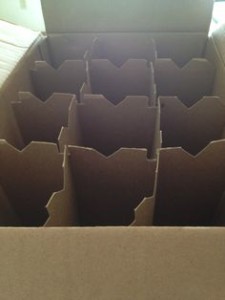If you have an admirable collection of liquor or wine, it’s a bit silly to imagine trying to transport it all in the back seat of your vehicle, right? Due to the glass packaging of most alcoholic beverages, they are difficult to transport and are very susceptible to breaking and handling fluctuating temperatures poorly during a move. This is why a bit of extra gentle handling is required for these types of items.
Packing Your Wine and Liquor Before Your Move
Taking Inventory
Certain types of liquors and wines should be stored at various temperatures, and this is why it’s wise to develop a game plan ahead of the move. White wines should be transported in cooler temperatures, such as in a portable cooler, while reds should stay in the general area of 55 degrees. A Gainesville moving company, like UF Mover Guys, that provides temperature-controlled vehicles is your best bet for the red varieties.
When wine increases in temperature and becomes hot, it ages much more quickly and runs the risk of becoming flat. Exceptionally low temperatures can easily dry out the bottle’s cork, making it easy for oxygen to seep in. Dry ice is used commonly by movers that have wine collections.
Once you’re ready to begin taking inventory of your alcohol collection, start making a note of liquids that can be packed together. This can give you a better idea of the number of boxes you’ll likely need.
Arranging Packing Materials
One of the best ways to gather packing supplies for these types of items is to check with local bars, liquor stores, nightclubs, and lounges for spare liquor and wine boxes. These types of materials are designed to transport liquor and wine by use of dividers, and they tend to be extremely sturdy. If you must use basic packing boxes, they must be heavy duty. Consider either buying/renting durable plastic containers or checking with local offices for copy paper packing boxes.
It’s advisable to wrap liquor bottles in sturdy cloth. Anything, ranging from towels to t-shirts, can be used. Wine can be packed this way too, but it’s a good idea to remember that in the event of an unfortunate glass bust, the cloth wrapping the bottle will likely be ruined. For wine, you should always leave bubble wrap and shredded paper for ideal packing materials.
Packing Your Alcohol
If you have to use traditional cardboard boxes for transporting your wine or liquor, be sure to affix a layer of tape to the bottom of the box for added support. Liquor and wine boxes won’t require this step due to their sturdiness. Consider layer a towel or shredded paper along the bottom of the box to cushion the contents. You might also want to individually wrap each bottle either with a thin cloth or paper to prevent label scratching. Place the liquor/wine into the box, and use extra towels or rags to fill the empty space around them.
Unpacking Your Alcohol
One of the first things you should steer clear of once you arrive in your new home is opening a bottle of wine for enjoyment. Liquor will be okay to open directly after the move, but wine will likely respond poorly to the drastic temperature changes. It’s a good rule of thumb to allow time for the wine to settle for 2-3 weeks before opening it. Once wine has been removed from its packaging, set it on its side again immediately. It’s very important that wine always touches its cork. If the cork dries out from standing upright for too long, oxygen will eventually seep in and ruin the beverage.

